
Spray painting is a common way of surface treatment, its principle is to use air pressure to spray paint from the nozzle, forming tiny droplets, that and evenly attached to the surface of the painted object. The role of spray paint is to provide a smooth, uniform, and decorative surface, but also to protect and extend the service life of the painted object. There are many kinds of spray paint, including oil paint, water-based paint, metallic paint, etc.and each type of paint has its own unique characteristics and application scope. For example, oil paint has strong adhesion, good wear resistance, water resistance, and oil resistance, but the smell, and environmental pollution; water paint has good environmental performance, adhesion, flexibility, and other performance is good, but longer drying time.
Spray painting of a very wide range of applications and can be used in automotive, furniture, electrical appliances, construction, and other fields. Take the automobile industry as an example, spray paint can not only make the appearance of the car more beautiful but also play a role in corrosion and rust prevention. In the process of automobile manufacturing, spray painting is an important process, that needs to go through the primer, finish paint, and other painting processes, to get a smooth, uniform, and decorative surface. In addition, the construction technology of spray painting is also a very key link. Before painting, the painted object should be pretreatment, such as oil removal and rust removal, and the pressure, distance, and angle should be adjusted to ensure that the paint can be evenly attached to the surface of the painted object.
In general, spray painting, as a common way of surface treatment, its principle and function are very important. Understanding the types, characteristics, and application scope of spray painting, as well as mastering the construction process and matters needing attention, can make the effect of spray painting more ideal, and also improve the service life and environmental performance of the painted object.

The types and characteristics of spray paint have a significant influence on the field of surface treatment. Spray paint can be classified according to its composition, viscosity, curing method, and other factors. For example, according to the composition classification, spray paint can be divided into oily paint and water-based paint, the paint contains organic solvent, and has the advantages of fast drying, and bright color, but environmental protection is poor; water-based paint with water as a diluent, has the advantages of environmental protection, safety, but drying is slow. In addition, the viscosity of the spray paint is also an important parameter that determines the thickness and uniformity of the coating. The curing method of spray paint can be divided into natural drying and artificial drying, and artificial drying can be divided into low-temperature baking and high-temperatureture baking.
In practical application, the types and characteristics of spray painting determine its application scope and advantages. For example, oil paint is suitable for the coating of metal surfaces, and can provide good adhesion and corrosion resistance; water-based paint is suitable for wood, plastic, and other non-metal surface coating, and has the advantages of non-to and toxic, environmental protection. In addition, the viscosity and curing method of spray painting also need to be selected according to the specific application scenario to achieve the best coating effect.
To give full play to the advantages of spray paint, some key matters need to be paid attention to in the construction process. First, the appropriate nozzle caliber and pressure should be selected to ensure that the coating is uniform and free of particles. Secondly, the distance and Angle of spray paint should be controlled to avoid uneven coating due to excessive distance or improper Angle. Finally, we should pay attention to the environmental hygiene of spray paint, to avoid dust and other impurities affecting the quality of the coating.
Painting has a wide range of applications, covering architecture, automobiles, furniture, home appliances, and other fields. In the field of construction, spray painting is often used for the decoration and protection of indoor and outdoor walls, which not only has a beautiful appearance but also can effectively resist wind and rain erosion and ultraviolet radiation. In the field of furniture and home appliances, spray painting is mainly used for the decoration and protection of product appearance, which can improve the aesthetics and durability of products. In addition, spray painting is also widely used in the automotive industry, including the car body surface, interior decoration, and parts painting.
The advantage of spray painting lies in its fast, convenient construction technology and diversified color selection. Spray painting can complete a large area of painting in a short time, and can choose different colors and coating thickness according to the need, to achieve the best decorative effect. In addition, the paint also has excellent adhesion and weather resistance and can maintain its aesthetic and protective performance.
In the construction field, the application of spray painting has been very mature. For example, in the painting of the exterior wall of the building, the painting can quickly complete the large area of painting, and has good ultraviolet resistance and weather resistance, can maintain the beauty and protection performance of the exterior wall for a long time. In the field of furniture and home appliances, spray painting is also widely used. For example, in furniture painting, spray painting can quickly complete the painting, and has good adhesion and durability, can effectively protect the surface of furniture from damage. In the field of home appliances, the application of spray painting is also very wide. For example, in the coating of air conditioning and refrigerators, the spray paint can quickly complete the painting and has good adhesion and corrosion resistance, which can effectively protect the product surface from corrosion.
The construction technology and precautions of painting are important links in the surface treatment of painting. Before painting, the substrate needs to be pretreatment, including oil removal, rust removal, grinding, and other steps, to ensure that the surface quality of the substrate meets the requirements. At the same time, to choose the appropriate spray paint, according to the nature of the paint and use requirements, one can use brush coating, rolling coating, spraying, and other ways for construction. During the painting process, attention should be paid to controlling the distance and Angle of the spray gun, as well as the number and thickness of the spraying layers, to ensure the uniformity and flatness of the coating. In addition, it is necessary to control the ambient temperature and humidity of the paint to avoid foaming and cracking. After the painting is completed, maintenance and maintenance, including regular waxing, avoid hard scraping and other measures, to maintain the long-term beauty and quality of the coating.

The principle and function of powder spraying are the core of the surface treatment. The principle of powder spraying is to use the dual action of electrostatic adsorption and high-pressure impact to evenly adsorb the powder on the surface of the workpiece and form a uniform coating. This is mainly done by the spray gun, which uses high-voltage static electricity to adsorb the powder on the surface of the workpiece while controlling the thickness and uniformity of the coating by adjusting the air pressure and electrical parameters. The function of powder spraying is to improve the corrosion resistance, wear resistance, and decorative performance of the workpiece, and can also play the role of insulation and radiation prevention. In addition, powder spraying can also seal and protect the workpiece, and prolong the service life of the workpiece.
Types and characteristics of powder spraying
Powder spraying, also known as powder coating, is a common surface treatment technique. Through the principle of electrostatic adsorption, the coating solid powder is evenly adsorbed on the surface of the workpiece, after high-temperature melting, leveling, curing, and other processes, forming a uniform, smooth, and smooth coating. Powder spraying has a variety of types and characteristics, which will be introduced in detail below.
According to the properties of the powder coating, the powder spraying can be divided into two categories: thermoplastic powder and thermosetting powder. The thermoplastic powder coating has good flexibility and processing performance, and can to the shape and size of complex workpieces, while the thermosetting powder coating has higher hardness and wear resistance, suitable for long-term appearance and durability.
During the powder spraying process, different nozzles and nozzles can be selected according to the size and shape of the workpiece to achieve uniform and efficient painting. At the same time, the process parameters of powder spraying such as powder pressure, gun distance, and coating speed can also be adjusted according to the need to achieve the best coating effect. In addition, powder spraying can also be used in combination with other surface treatment techniques such as electroplating, painting, and so on to achieve better performance.
The application range of powder is very wide and can be applied in automobiles, home appliances, construction, machinery, and other fields. For example, the coating of automobile body can be applied to improve the durability and aesthetics of the body; in the field of home appliances, spraying can be used for the appearance treatment of refrigerators, washing machines, and other products; in the field of construction, spraying can be used for the corrosion and decoration of building materials such as aluminum profiles and steel structures.
In general, as a surface treatment technology, powder spraying has a variety of advantages and characteristics, which can meet the needs of different fields. With the continuous development and progress of technology, the application prospect of powder spraying will be broader.
Powder spraying, as one of the three common surface treatment methods, has a unique application scope and advantages. Powder spraying, also known as powder coating, is a powder coating that is evenly sprayed on the surface of the object through electrostatic spraying and then baked curing to form a coating process. Compared with traditional liquid coatings, powder spraying has many advantages.
First, the scope of powder application is wide. Due to the special nature of the powder coating, it can be sprayed on objects of various shapes and materials, including metal, plastic, glass, etc. Powder coating can be applied in various fields, such as automobiles, home appliances, construction, pipes, etc. According to statistics, the current global powder coating market is growing at an average annual rate of 5%, which is mainly due to the wide application of powder spraying technology.
Secondly, the advantages of powder spraying are obvious. Because powder coating is a kind of solid particle, with no volatile organic compounds, the spraying process has the advantages of environmental protection and energy saving. At the same time, the color and appearance of the powder coating stability are good, not easily fade and discolor. In addition, the powder coating has excellent physical and chemical properties, such as corrosion resistance, wear resistance, insulation, etc. According to the research, the anticorrosion effect of the powder coating is more than four times that of the traditional paint coating.
In practical application, the powder spraying process also performs well. For example, in the automotive industry, powder spraying has become one of the main coating methods of automobile exterior parts. It can not only improve the appearance quality of the car but also enhance the corrosion prevention ability of the car. In the home appliance industry, powder spraying is also widely used in the appearance of various home appliances and the coating of internal parts.
In summary, powder spraying as a surface treatment method has a wide range of applications and obvious advantages. With the improvement of environmental awareness and the continuous progress of technology, the powder spraying process will be more widely used and developed.
The construction technology and precautions are an important part of the powder spraying surface treatment method. In the process of powder spraying construction, the workpiece needs to be pretreated, including oil removal, rust removal, phosphorization, and drying, to ensure that the surface of the workpiece is clean and has suitable roughness. The pretreatment workpiece should be coated with powder, including electrostatic spraying or fluidized bed immersion coating to make the powder evenly attached to the surface of the workpiece. This is followed by a curing step in which the coating melts and flattens by heating to form a smooth coating. Finally, the postprocessing phase, which includes the steps of dressing, inspection, and packaging, to ensure the quality and appearance of the final product.
In the process of powder spraying construction, attention includes temperature, humidity, coating thickness, and coating environment. Temperature and humidity have an important influence on the curing quality and performance of the coating, which should be controlled within the appropriate range. Coating thickness is also a key factor, either too thin or too thick will affect the adhesion and appearance of the coating. In addition, the coating environment needs to be kept clean to reduce the impact of dust and pollutants on the coating quality. To ensure the quality and efficiency of powder spraying construction, it is recommended to adopt automated equipment and technologies, such as robot spraying and automated production lines.
In practical application, powder spraying surface treatment is widely used in automobiles, home appliances, building materials machinery, and other fields. Compared with the traditional painting process, the powder spraying process has higher production efficiency and lower energy consumption, while providing excellent anti-corrosion and wear resistance. In the future, with the improvement of environmental awareness and the continuous progress of technology, the powder spraying surface treatment method is expected to be applied and promoted in more fields.

Electrophoresis, as an important surface treatment technique, is based on the migration behavior of charged particles in an electric field. When a charged particle is in an electric field, the electric force moves in the electric field, a phenomenon called electrophoresis. During electrophoresis, the charged particles migrate under the action of an electric field and eventually form a coating on the electrode.
Electrophoretic coating is a common electrophoretic application, which uses the principle of electrophoretic coating to coat the coating on the surface of the workpiece. Because of the advantages of high deposition rate, high adhesion, and low energy consumption, it has been widely used in automobiles, home appliances, building materials, and other fields. For example, body painting in the automotive industry uses symphony coating technology on the car body, to improve the anti-corrosion performance and appearance quality of the body.
The advantages of electrophoretic coating are its high deposition rate and high adhesion. In the automotive industry, the deposition rate of electrophoretic coating can reach 1-3mg / in2, which is much higher than the traditional manual spraying method. In addition, because the electrophoretic coating is formed under the action of the electric field, the adhesion between the coating and the substrate is very strong, which is not easy to fall off. This provides more reliable anti-corrosion protection for the automotive industry.
In addition to the automotive industry, electrophoretic coating is also widely used in other fields. For example, in the home appliance industry, electrophoretic coating can be used to coat metal shells to improve the appearance quality and corrosion resistance of products. In the building materials industry, electrophoretic coating can be used to coat metal doors and Windows, railings, etc., to improve the anti-corrosion and decorative performance of products.
In short, electrophoresis, as a surface treatment technology, has the advantages of high deposition rate and high adhesion and has been widely used in automobiles, home appliances, building materials, and other fields. With the continuous progress of technology and the expansion of the application field, the elechoresis technology will continue to play an important role.
The types and characteristics of electrophoresis occupy an important role in surface treatment methods. There are many kinds of electrophoresis, which can be divided into different types according to different classification criteria. According to the charged properties, electrophoresis can be divided into anode electrophoresis and cathode electrophoresis, which uses the coated piece as the anode as the cathode, forming a negative charge on the surface of the workpiece to move the positively charged coating particles to the surface of the workpiece under the elecelectro field using the cathode as the anode to form a positive charge on the surface of the workpiece, thereby moving the negatively charged coating particles to the surface under the action of the electric field. According to the properties of the paint, electrophoresis can be divided into epoxy resin electrophoresis, polyacrylate electrophoresis, polyurethane electrophoresis, urea-formaldehyde resin electrophoresis, etc. These different types of electrophoresis have their acteristics and advantages, as epoxy resin electrophoresis has high adhesion, high corrosion resistance and, other advantages, suitable for automotive, home appliances and, other fields; and polyacrylate electrophoresis has high transparency, high gloss, and other advantages, suitable for construction, furniture, and other fields.
Electrophoresis, as a surface treatment technology, has wide applications in the industrial field. Its application scope covers the automobile, home appliances, building materials, aerospace, and other industries. The advantage of electrophoresis technology is that it can provide high corrosion resistance, high decoration, high functionality, environmental protection, and no pollution, which makes it occupy an important position in the field of surface treatment. Taking the automobile industry as an example, electrophoresis technology is widely used in the anti-corrosion treatment of automobile bodies and parts. Through electrophoretic coating, the corrosion resistance of the car body has been significantly improved, thus greatly extending the service life of the car. In addition, in the home appliance and building materials industry, electrophoresis technology has also been widely used. Through electrophoretic coating, the appearance quality and corrosion prevention performance of home appliances and building materials products have been significantly improved, satisfying the consumers' pursuit of high-quality life. In the future, with the continuous improvement of environmental awareness and the continuous innovation of technology, the application scope of electrophoresis technology will be further expanded to provide more high-quality and environmentally friendly surface treatment solutions for the development of various industries.
The construction technology and precautions of electrophoresis are an important part of the surface treatment method. In the process of electrophoresis construction, it is first necessary to choose the appropriate electrophoretic coating, according to the coating requirements and coating environment, choose the appropriate cathode or anode electrophoretic coating. Secondly, the surface treatment needs to be carried out before electrophoresis, to ensure that the surface of the workpiece is free of oil stains, rust, impurities, and other factors affecting the coating quality. In the construction process, it is also necessary to control the concentration, conductivity, PH value, and other parameters to ensure the coating effect. In addition, the temperature and time of electrophoresis should be controlled to avoid too thick or too thin coating. After electrophoresis, post-processing, such as curing, cleaning, and drying, is needed to improve the adhesion and durability of the coating. In the construction process, it is also necessary to pay attention to safety issues, such as wearing protective clothing, gloves, and other protective equipment, to avoid causing harm to the human body. At the same time, it also needs to pay attention to environmental issues, such as wastewater treatment and waste recycling.
Among the three common surface treatments, painting, spraying, and electrophoresis have their advantages and disadvantages. To better understand their comparison, we will analyze them from multiple perspectives.
First, from the point of view of the advantages, the advantages of spray painting are rich in color, strong decorative, and can meet a variety of appearance requirements. Powder spraying has excellent weather resistance and corrosion prevention performance, suitable for outdoor environments. Electrophoresis has excellent uniformity and permeability, suitable for large components and complex shapes of the workpieces.
In terms of disadvantages, the disadvantages of spray paint the weak adhesion, easy to fall off, and needs regular maintenance. The disadvantage of powder spraying is that it is easy to produce dust pollution during construction, which has a certain impact on human health. The disadvantage of electrophoresis is that the equipment investment is large and the production cost is higher.
In terms of application scenarios, spray painting is suitable for interior decoration, furniture manufacture, ing, and other fields; powder spraying is suitable for outdoor environments such as building exterior walls and Bridges, and electrophoresis is suitable for large manufacturing fields such as automobiles and home appliances.
In the future development trend, with the continuous improvement of environmental awareness, spray painting and powder spraying will be gradually replaced by environmentally friendly surface treatment methods. Electrophoresis, as a mature surface treatment method, will continue to play an important role in future development.
In terms of application scenario comparison, the three surface treatment methods of spray painting, powder spraying, and, electrophoresis each have their characteristics. Spray paint is suitable for the surface of various materials, especially for irregular shapes, It is rich in color, and decorative, and has good adhesion and wear resistance. Powder spraying is suitable for large workpieces or continuous production lines, such as auto parts, metal doors, Windows, etc., its advantages are uniform coating, safe coating, and good corrosion resistance. Electrophoresis is suitable for large-scale continuous production, such as car bodies, home appliance shells, etc., its advantages are high efficiency, low energy consumption, high swimming permeability, uniform coating, and so on. In the practical application, the appropriate surface treatment methods should be selected according to the specific requirements and scenarios.
In the future development trend, spray paint, powder spraying, and electrophoresis three surface treatment methods will face new challenges and opportunities. With the increasing environmental awareness, green surface treatment technology will become the mainstream. For example, environment-friendly surface treatment materials such as water-based paints and powder coatings will gradually replace the traditional solvent-based coatings, reducing the pollution to the environment. In addition, intelligent surface treatment technology will also become the future development direction. By introducing sensors and intelligent technology, functions such as real-time monitoring, automatic repair, and predictive maintenance can be realized to improve the efficiency and reliability of surface treatment. At the same time, the demand for personalized surface treatment will continue to grow to meet the diversified needs of consumers for product appearance and function. In short, the future development trend of spray painting, powder spraying, and electrophoresis will pay more attention to environmental protection, intelligence, and personalized to meet the changing market demand.
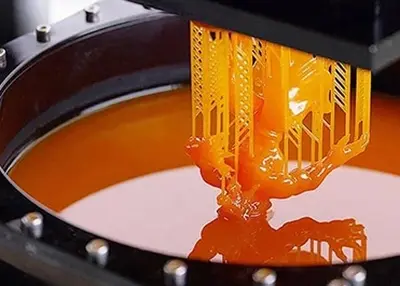 3D Printed Car Parts: All About 3D Printing in the Automotive IndustryMarch 1, 20243D printing for car parts caters to the personalization needs of many companies without compromising quality. Find out everything you need about 3D printed car parts here.view
3D Printed Car Parts: All About 3D Printing in the Automotive IndustryMarch 1, 20243D printing for car parts caters to the personalization needs of many companies without compromising quality. Find out everything you need about 3D printed car parts here.view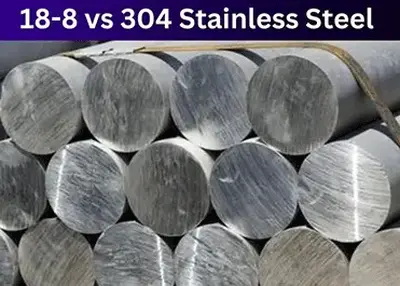 18-8 Stainless Steel vs 304: What's the Difference and Which One to Choose?December 7, 2023Stainless steel is one of the most widely used materials in the world, thanks to its excellent properties, such as corrosion resistance, strength, durability, and aesthetics. However, not all stainless steel grades are the same.view
18-8 Stainless Steel vs 304: What's the Difference and Which One to Choose?December 7, 2023Stainless steel is one of the most widely used materials in the world, thanks to its excellent properties, such as corrosion resistance, strength, durability, and aesthetics. However, not all stainless steel grades are the same.view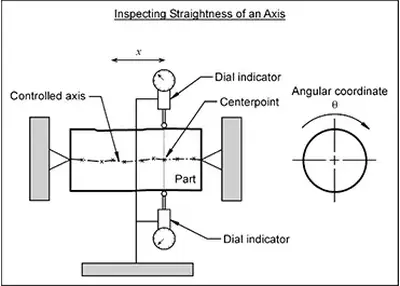 Unlocking Precision in CNC Machining: Understanding Straightness and FlatnessNovember 17, 2023As a leading precision machine shop, Richconn stands committed to delivering unrivaled precision and excellence in every aspect of our work. Dive into the world of geometric accuracy with us as we explore the pivotal concepts of "straightness" and "flatness" in CNC machining.view
Unlocking Precision in CNC Machining: Understanding Straightness and FlatnessNovember 17, 2023As a leading precision machine shop, Richconn stands committed to delivering unrivaled precision and excellence in every aspect of our work. Dive into the world of geometric accuracy with us as we explore the pivotal concepts of "straightness" and "flatness" in CNC machining.view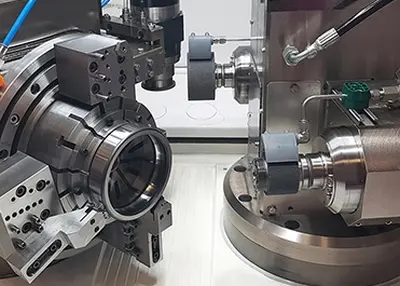 Unveiling the World of Complex Machined Parts: A Comprehensive ExplorationNovember 14, 2023Embark on a journey into the intricate realm of complex machined parts, where precision meets innovation and engineering excellence takes center stage. In this comprehensive exploration, we'll delve into the definition, manufacturing processes, applications across industries, quality standards, material selection, market trends, and even the key players in the supply chain. Get ready to unlock the secrets behind these components that power the machinery shaping our modern world.view
Unveiling the World of Complex Machined Parts: A Comprehensive ExplorationNovember 14, 2023Embark on a journey into the intricate realm of complex machined parts, where precision meets innovation and engineering excellence takes center stage. In this comprehensive exploration, we'll delve into the definition, manufacturing processes, applications across industries, quality standards, material selection, market trends, and even the key players in the supply chain. Get ready to unlock the secrets behind these components that power the machinery shaping our modern world.view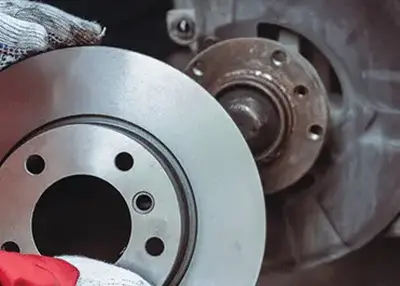 What Are Machined Rotors?November 8, 2023Welcome to the world of precision engineering, where the subtle details can make a world of difference. In the realm of CNC machining and automotive components, 'Machined Rotors' emerge as a pivotal player, quietly ensuring your safety and vehicle performance.view
What Are Machined Rotors?November 8, 2023Welcome to the world of precision engineering, where the subtle details can make a world of difference. In the realm of CNC machining and automotive components, 'Machined Rotors' emerge as a pivotal player, quietly ensuring your safety and vehicle performance.view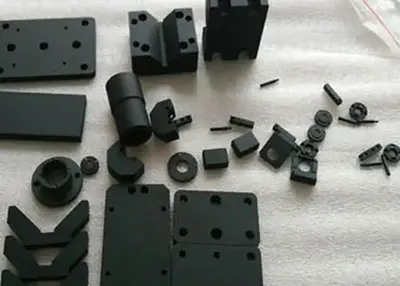 What Are the Types of Metal Surface Finish?September 16, 2022Machining surface finishing is an important processing procedure in machining. Machining surface finish can play an important role in protecting and beautifying the workpiece. In machining, there are ...view
What Are the Types of Metal Surface Finish?September 16, 2022Machining surface finishing is an important processing procedure in machining. Machining surface finish can play an important role in protecting and beautifying the workpiece. In machining, there are ...view